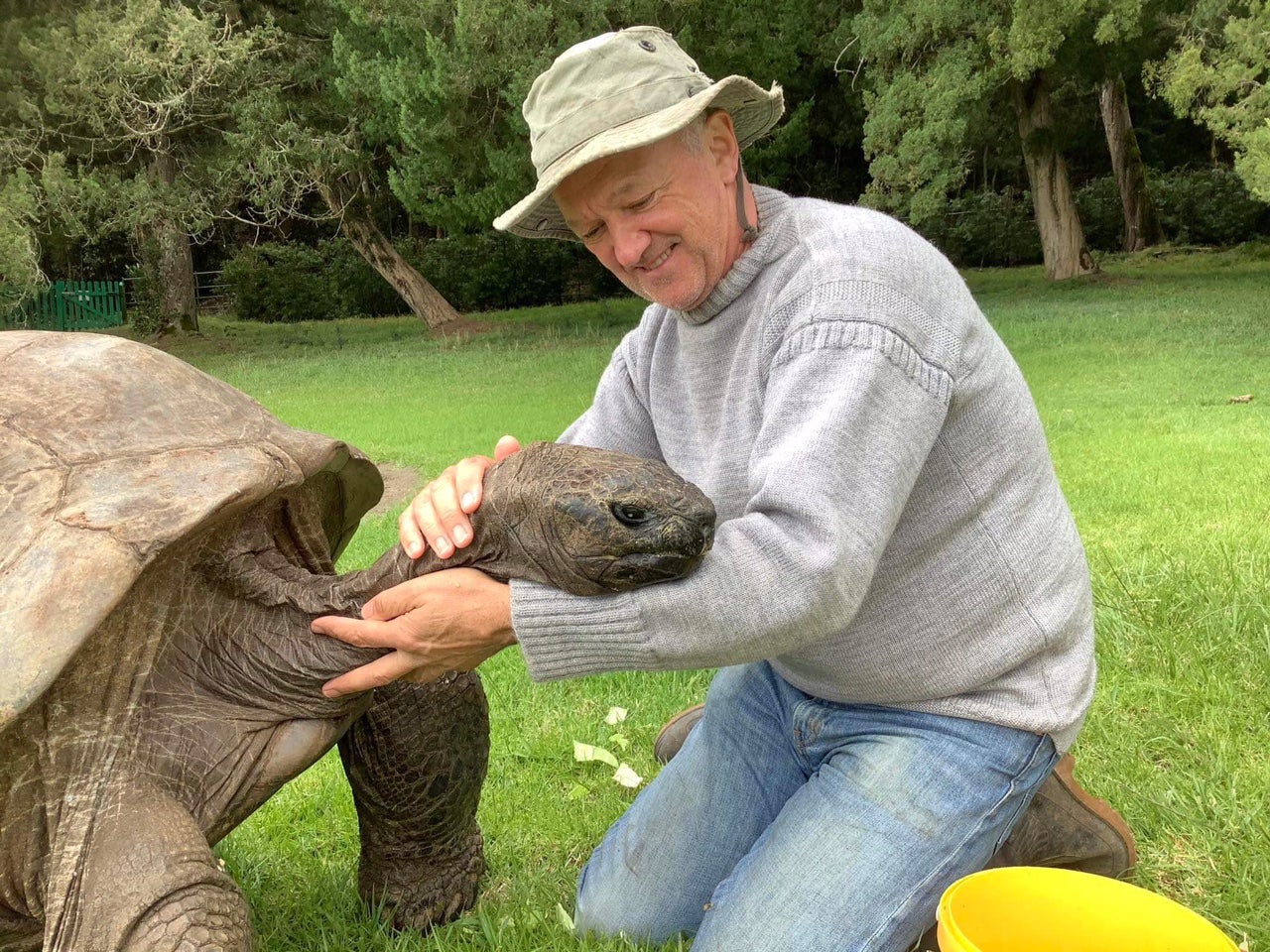
Jonathan, the Seychelles giant tortoise, stands as the world's oldest living land animal, a distinction officially acknowledged by Guinness World Records. His longevity extends to being the oldest documented turtle or tortoise, set to mark his 190th birthday this year, although the precise date of his birth remains elusive.
Born approximately in 1832, Jonathan's enduring journey unfolds predominantly on St. Helena, a modest island in the South Atlantic Ocean. Originally hailing from Seychelles, he made his way to St. Helena in 1882, arriving as a fully grown adult. This detail, as revealed by island veterinarian Joe Hollins, suggests Jonathan was likely at least 50 years old at the time of his relocation.
An archival photograph captured between 1882 and 1886 portrays Jonathan ambling through the garden of Plantation House, the official residence of the governor of St. Helena. Remarkably, this is the same residence he occupies to this day, bearing witness to the administrations of 31 governors, two world wars, the tenures of 40 US presidents, and the reigns of seven British monarchs.
Despite the dynamic changes in the global landscape, Jonathan's existence remains characterized by simplicity—his pursuits centering on fundamental activities such as eating, sleeping, and mating. Unfortunately, he has lost his ability to see and smell. Living alongside three other giant tortoises—David, Emma, and Fred—Jonathan continues to hold the spotlight as the island's celebrated personality, with his image even gracing St. Helena's 5 pence coins. Plans for commemorative stamps featuring Jonathan are underway as part of the anticipated festivities for his impending birthday.
Congratulations!
You have completed the comprehension questions.
✔

.png)